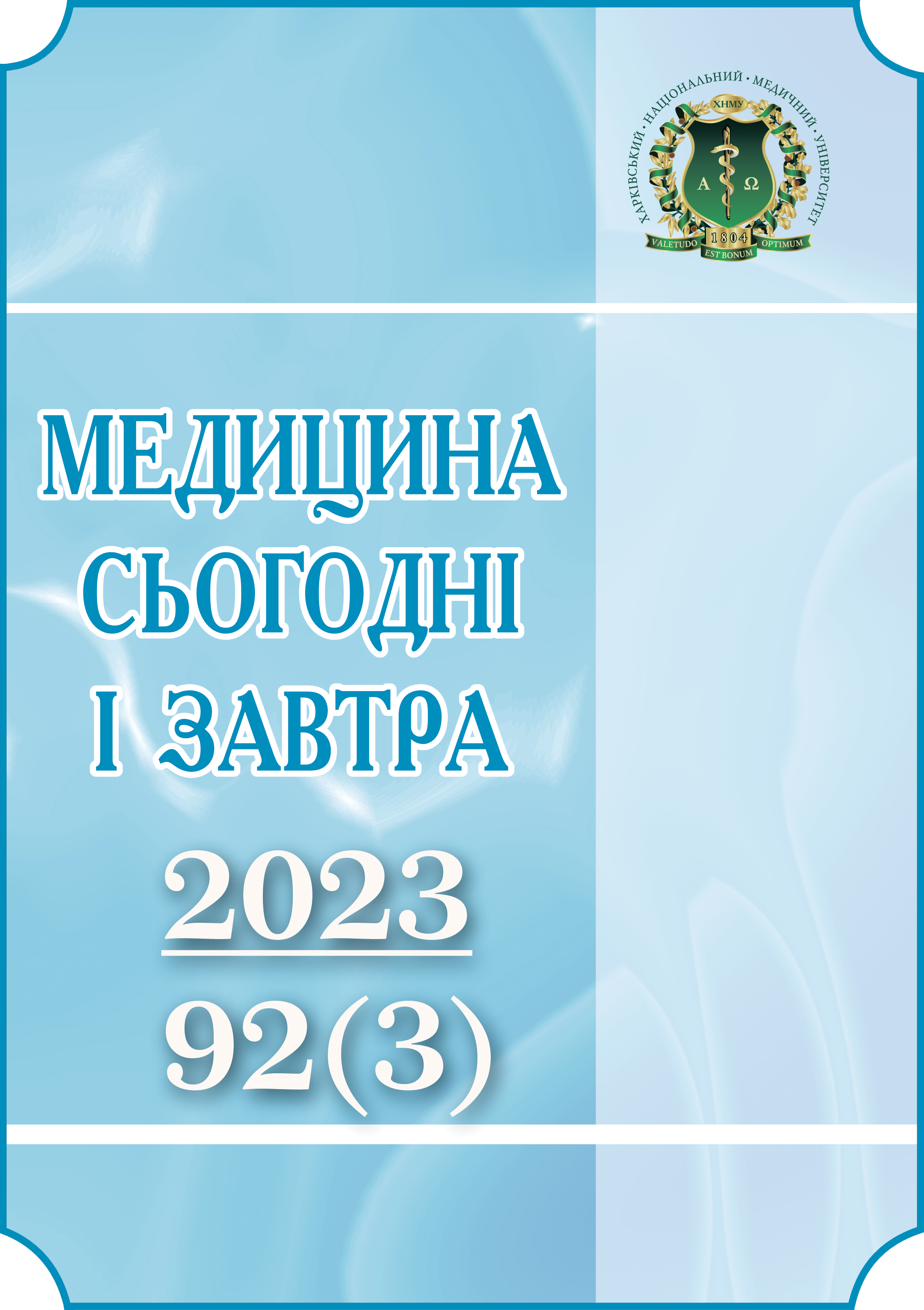Abstract
The research analyzes the effectiveness of third molar extraction with orthodontic indications in children of different ages. The study was conducted on 95 patients divided into three groups: the I group included 30 children aged 11–13 years; to II – 35 children aged 13–16 years, and III – 30 children aged 16–18 years. Clinical examinations were carried out according to generally accepted methods immediately after tooth extraction, 3 and 6 days later. The paraclinical parameters for the study were the level of lysozyme activity in the oral fluid of observation groups’ children, which was determined according to Horin H. method modified by Levitskyi A. and Zhigina O., as well as the concentration of secretory IgA, which was determined due to simple radial immunodiffusion method. Statistical processing of data was carried out using generally accepted methods of variational statistics. The results of the study show that the age of 11–13 years old is the most reasonable period for third molars extraction with orthodontic indications, which is justified by a shorter duration of postoperative period, fewer complications and a better protective capacity of children's oral fluid in this age period. In particular, in the dynamics of observation of children of the I group in the postoperative period, significantly fewer signs of the inflammatory process were noted, which can be explained by the less traumatic surgical manipulations. On the other hand, in children of II and III groups, the above-mentioned clinical symptoms had a higher degree of manifestation, were diagnosed in a larger number of children and indicated the development of the postoperative inflammatory process. The level of lysozyme activity in the oral fluid of children in the observation groups ranged from (40.87±2.01) units/l to (26.13±1.76) units/l, and secretory immunoglobulin A from (0.35±0.02) g/l up to (0.32±0.02) g/l, which generally indicates a deterioration of local protective reactions with increasing age of children.
Keywords: сhildren, hermectomy, postoperative period, lysozyme, immunoglobulins.
References
Pankevych AI, Kolisnyk IA, Hohol AM. Differentiated approach to the surgical extraction of wisdom teeth. Ukrainian dental almanac. 2019;4:24-8. Available at: http://repository.pdmu.edu.ua/bitstream/123456789/11754/1/Dyf_pidhid_do_operac_vyd_zuba.pdf [in Ukrainian].
Kuroedova VD, Vyzhenko YY. Position of the third molars and their germs for data ortopantomogram in patients with distal occlusion. Ukrainian Dental Almanac. 2015;2:60-4. Available at: https://dental-almanac.org/index.php/journal/article/view/29 [in Ukrainian].
Hohol Gogol AM, Pankevych AI, Kolisnyk IA. Choice the method of surgical extraction of lower wisdom teeth depending on their position to prevention of postoperative sensory disturbances. Bulletin of problems in biology and medicine. 2016;2-1(128):179-83. Available at: http://repository.pdmu.edu.ua/bitstream/123456789/1238/1/Choice_the_method_of_surgical_extraction.pdf [in Ukrainian].
Brunello G, Biagi M, Crepaldi G, Rodrigues FI, Sivolella S. An Observational Cohort Study on Delayed-Onset Infections after Mandibular Third-Molar Extractions. Int. J. Dent. 2017;1435348. DOI: 10.1155/2017/1435348. PMID: 28607555.
Agrawal A, Yadav A, Chandel S, Singh N, Singhal A. Wisdom tooth – complications in extraction. J. Contemp. Dent. Pract. 2014;15(1):34-6. DOI: 10.5005/jp-journals-10024-1484. PMID: 24939262.
Sigron GR, Pourmand PP, Mache B, Stadlinger B, Locher MC. The most common complications after wisdom-tooth removal: part 1: a retrospective study of 1,199 cases in the mandible. Swiss. Dent. J. 2014;124(10):1042-6. PMID: 25342545.
Tkachenko PI, Hohol AM, Pankevych AI, Kolisnyk IA, Dobroskok VO. Coronectomy as a method for surgical treatment of impacted mandibular third molars: indications and own clinical studies of postopertive period. World of Medicine and Biology. 2019;2(68):117-21. DOI: 10.26724/2079-8334-2019-2-68-117-121.
Frenkel B, Givol N, Shoshani Y. Coronectomy of the mandibular third molar: a retrospective study of 185 procedures and the decision to repeat the coronectomy in cases of failure. J. Oral Maxillofac. Surg. 2015;73(4):587-94. DOI: 10.1016/j.joms.2014.10.011. PMID: 25544301.
Mukherjee S, Vikraman B, Sankar D, Veerabahu MS. Evaluation of outcome following coronectomy for the management of mandibular third molars in close proximity to inferior alveolar nerve. J. Clin. Diagn. Res. 2016;10(8):ZC57-62. DOI: 10.7860/JCDR/2016/20991.8273. PMID: 27656565.
Vanshika Jain, Priyanka Kapoor, Ragini Miglani. Demirjian approach of dental age estimation: Abridged for operator ease. J Forensic Dent Sci. 2016;8(3):177. DOI: 10.4103/0975-1475.195103. PMID: 28123280.
Hammer О. PAST: Paleontological Statistics, Version 4.14. Reference manual. Oslo: Natural History Museum University of Oslo; 2023. 311 p. Available at: https://www.nhm.uio.no/english/research/resources/past/downloads/past4manual.pdf

This work is licensed under a Creative Commons Attribution-NonCommercial-ShareAlike 4.0 International License.

